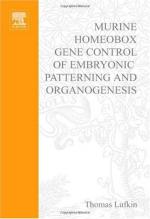|
This section contains 495 words (approx. 2 pages at 300 words per page) |

|
Since their discovery by David Hogness in the genome of the fruit fly Drosophila melanogaster in 1983, homeobox genes, and the proteins they encode the homeodomain proteins, have turned to play important roles in the developmental processes of many multicellular organisms.
The first homeobox identified in Drosophila was described as a conserved DNA region of about 180 base pairs. It is found on eight different sites on the third chromosome, a chromosome known to be central to developmental processes. These genes found to encode homeodomain proteins were developmental proteins, in particular homeotic genes, from which the name homeo box was derived.
The next homeobox gene was found in frogs. Its sequence is almost identical to that of the fruit fly. More organisms were studied and the same DNA sequences were found in earthworms, beetles, mice, chickens, cows, sea urchins, yeast, plants, nematodes, and even though humans are separated from insects...
|
This section contains 495 words (approx. 2 pages at 300 words per page) |

|


